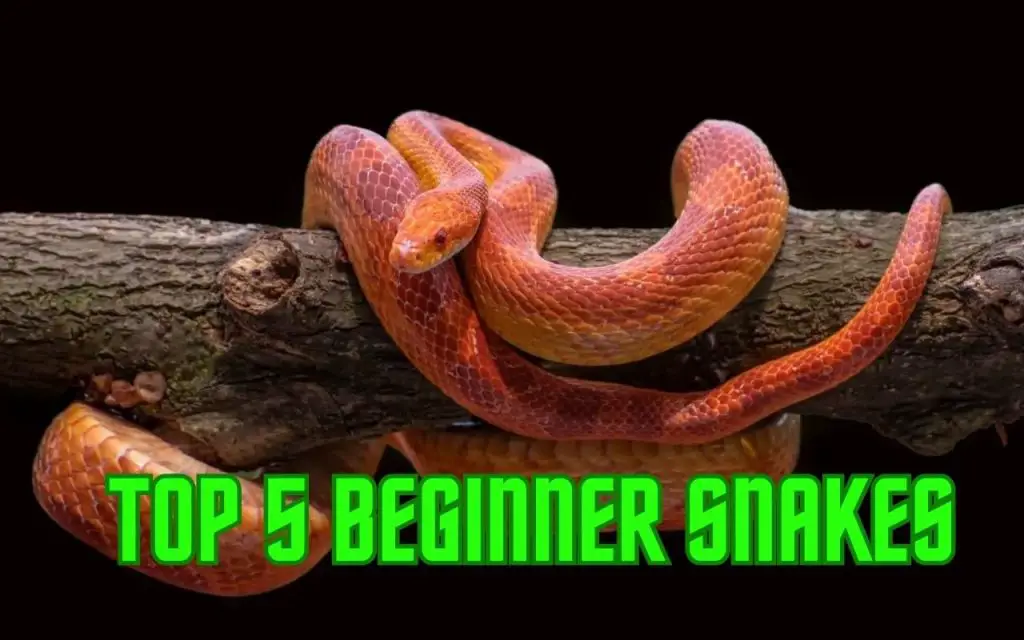Your first pet snake should tick a few boxes: It should be docile, easy to feed, and easy to house. Based on these criteria, I’ve chosen the top 5 best pet snakes for beginners. Each one of these species is safe and easy to care for, even if you’re a complete novice.
Last updated on May 16th, 2023 at 09:53 am
In this article, I’ll talk about what makes each one great. We’ll look at their pros and cons, but also my experience with keeping them, and why they get my personal recommendations…

Best snakes for beginners
Gone are the days when snakes were a weird or unusual pet. These days, captive-bred snakes are widely available. In fact, the sheer number of species available can get a little confusing. You can choose from Boas, Pythons, Kingsnakes, House Snakes and even Anacondas.
The purpose of this post, however, is to guide you towards a first snake that stays small, doesn’t bite and is hardy enough to tolerate the odd husbandry mistake. We’ll also look at some tips on how to find them for sale and how much they cost.
Common pet snake species

There are a lot of small to medium sized snake species and breeds (often called localities) available. Some are great pets that are spectacular to look at. Others are a little tricky, moody, or simply venomous. Those guys are best left to experienced keepers…
Nonetheless, in the great pet category there are several that didn’t make my list – but are still great contenders. Milk Snakes, Rainbow Boas, House Snakes, Bull Snakes/Gopher Snakes and Green Tree Pythons all make great pets but are either less widely available or less hardy than those in my top 5.
Green Tree Pythons, for example, can be hard to find, and downright expensive when you do find them. Bull snakes, for their part, are awesome pets, but less widely available than the others on this list. They also tend to get a bit larger.
The Rough Green Snake is another great choice, but they don’t take well to handling. They definitely make fascinating display animals and are one of my personal favourites. For a lot of people, handleability is a must though, and that’s why they didn’t quite make the cut.
All in all, if I had to extend this list (and everyone had all day to read it) – I’d add in most Milk Snakes, House Snakes, most other Kingsnakes, the Children’s Python, the Kenyan Sand Boa, Garter Snakes, and some Rat Snakes.
Best snakes for kids

The best snakes for kids are those that don’t bite and can take a little mistake in their husbandry from time to time. Of the most popular snake species available, I feel that Corn Snakes and Western Hognoses are the most appropriate for keepers under the age of twelve.
Furthermore, these two species are fairly resistant to stress. They won’t go into a major sulk and go off food if your kid handles them three times that week instead of once.
Once kids have some experience, they can move onto Garters, Ball Pythons, Bull Snakes, and most other small Colubrid and Boa species. For example, I started out with a Garter Snake when I was ten years old, then got a Ball Python when I was twelve.
You might be concerned at the idea of your little one owning a python at twelve years of age, but in my experience most kids can handle a lot more responsibility than we give them credit for.
What snake is the safest to have as a pet?
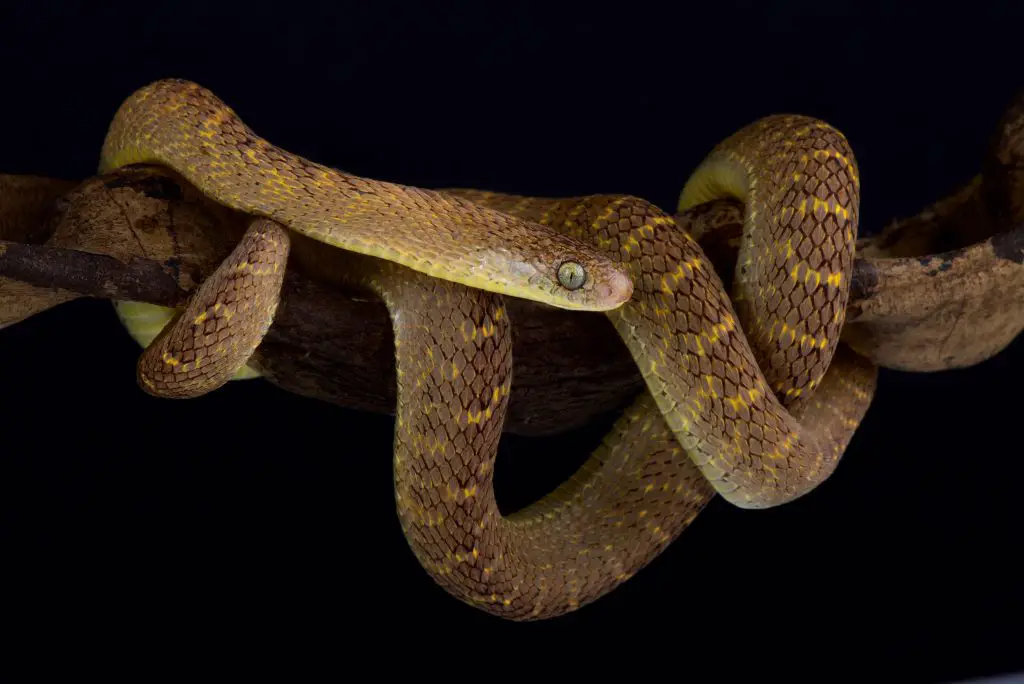
All snakes have teeth apart from Egg Eating Snakes, but some simply do not like to bite. This means that Egg Eating Snakes are obviously the safest – as they can’t bite; just “gum” you really.
The problem is, we have to consider the welfare of the animal too. Egg Eating Snakes are small and delicate, making them a poor choice for beginners. Often, when you see them for sale, they are also wild-caught and in terrible shape. What you need is a snake that is very unlikely to bite and hardy in a captive setting.
When you take these things into consideration, the safest snake for both the owner and the animal is most definitely the Corn Snake. They are hardy, tolerate handling well, and become incredibly tame. Even if they do bite, they have very small teeth that don’t do any damage.

My top 5 Best snakes for beginners
Without further ado, let’s take a look at my top five. We now know what factors we’re looking for, and these guys have them all covered. They are the following species:
- Corn snake (Pantherophis guttatus)
- Western Hognose (Heterodon nasicus)
- Ball Python (Python regius)
- California Kingsnake (Lampropeltis californiae)
- Rosy Boa (Lichanura orcutti) and (Lichanura trivirgata)
1. Corn snake (Pantherophis guttatus)
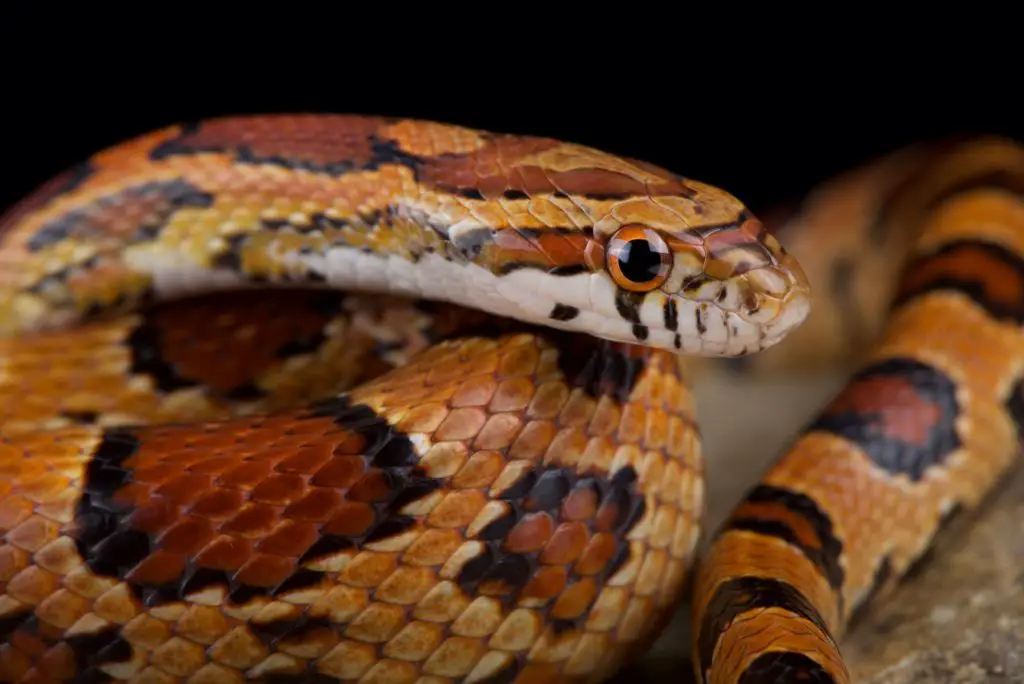
This snake was the first popular pet snake, and to this day is extremely common in captivity. In fact, you can pick one up for as little as $20. Add to this miniscule price tag the fact they are incredibly hardy and docile, and you realise why they got the top spot here.
The hardiness and general adaptability of Corn Snakes means that they can be kept in a variety of enclosure types. Cheap, but well set-up plastic tubs can work just as well as expensive melamine vivariums.
When it comes to food, they’re easy too. They just like to eat. No fussing or variety is needed. A healthy frozen-thawed mouse or two a week is literally all they need.
In return, they’ll reward you with regular night-time activity to observe and a lifespan often exceeding twenty years. Oh yeah, did I mention Corn Snake morphs? Check out the video below!
What I like about Corn Snakes
Over the years I’ve kept a lot of Corn Snakes, some of which were rescues. I’ve always found them to be exceptionally tame, and extremely good feeders. Even sick ones that I’ve nursed back to health have gone on to be great pets. Overall, their main quality is that they have very simple husbandry requirements.
| Pros | Cons |
| – Super cheap – Widely available – Hardy – Huge variety of morphs – Good feeders | – Extremely good at escaping |
2. Western Hognose (Heterodon nasicus)
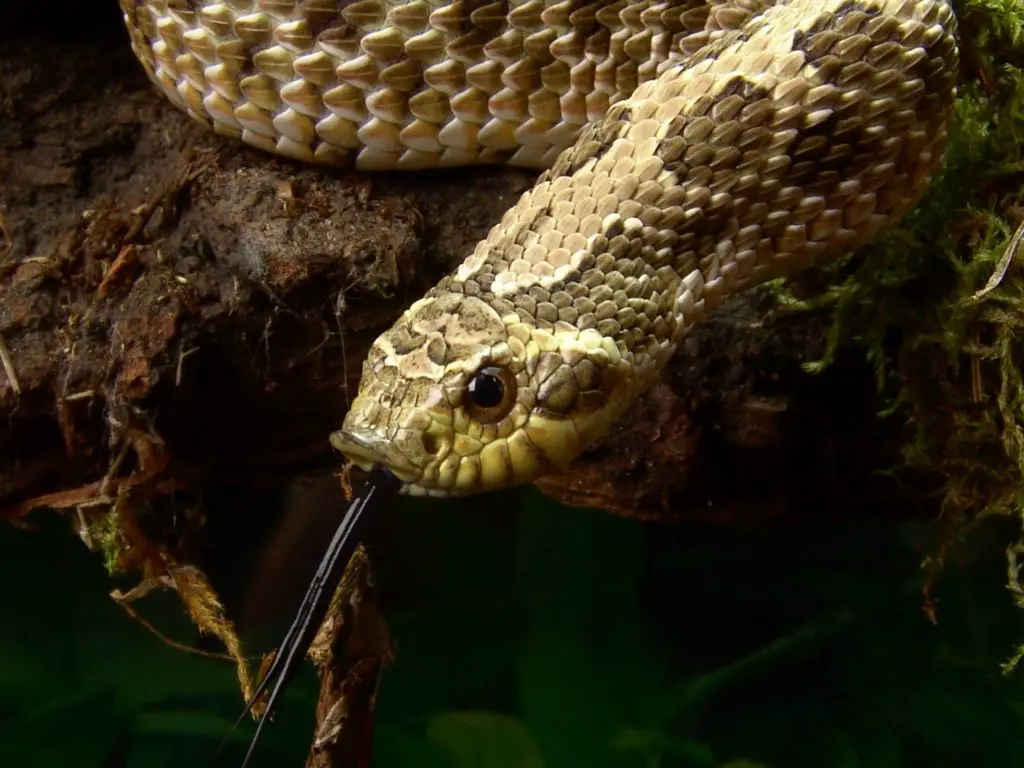
The Western Hognose is a stocky, cute little animal with a goofy, upturned snout. If this isn’t enough to get your attention – then consider the fact that their small size is perfect for handling. Don’t get me wrong, there are lots of other small snakes, but a lot of them tend to be skinny and wriggly. The Western Hognose, on the other hand, always has nice, chunky proportions.
As adults, they only reach an absolute maximum of 3ft (90cm) for females, and that is incredibly rare in my experience. In fact, the animal in the photo below is pretty typical. Males are even smaller, and slightly less chunky. The last one I handled was roughly 16in (40cm).
Other factors in their favour are their reluctance to bite, and the fact that they can quite happily live their entire lives in a 24 to 36in (60 to 90cm) long enclosure. Their only downside is the fact that they like to burrow and may be harder to observe than Corn Snakes.

What I like about Western Hognose Snakes
The first time I saw a Western Hognose in person I was blown away by the black and orange pattern on its belly, alongside the weird pi-snout. These features combine to make them an incredibly cute-looking snake. I also enjoy watching them burrow into their substrate, and do their hissing and puffing when they’re in a bad mood. This makes me laugh because it’s all for show and they never bite!
| Pros | Cons |
| – Cheap – Widely available – Hardy – Perfect size | – like to burrow |
3. Ball Python (Python regius)
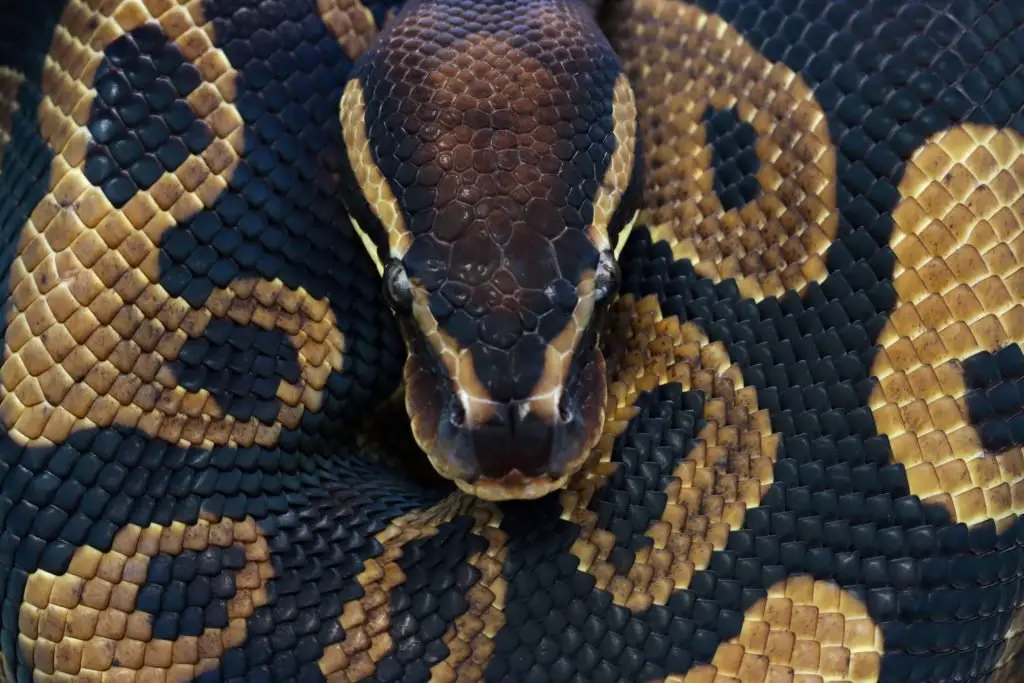
As you may have noticed, about half the content on this site pertains to Ball Pythons, also known as Royal Pythons. And although I may be a little biased, I’m not the only one…
Around the world, this species has become a contender for the ever-popular Corn Snake, and this is in great part down to its gentle nature and spectacular colour morphs. Ball Pythons also reach a more manageable size than most of their relatives. Often, they top out at between 3 and 4.5ft (90 and 137cm).
Notwithstanding, there is one part of their temperament that some keepers dislike. Namely, that they have a habit of fasting during the breeding season.
If you’re not used to reptiles, you probably will find it a little unnerving to have an animal that sits there and doesn’t eat for three months. It doesn’t harm them, it’s natural – but a lot of people find it frustrating.
What I like about Ball Pythons
There’s a lot to like about this species. First and foremost is obviously their gentle nature. What really got me hooked, though, is the huge variety of morphs available. If you do get one, don’t be surprised if you end up getting several more – it does become an obsession.
| Pros | Cons |
| – Cheap – Hardy – Widely available – Huge variety of morphs | – may fast for long periods |
4. California Kingsnake (Lampropeltis californiae)
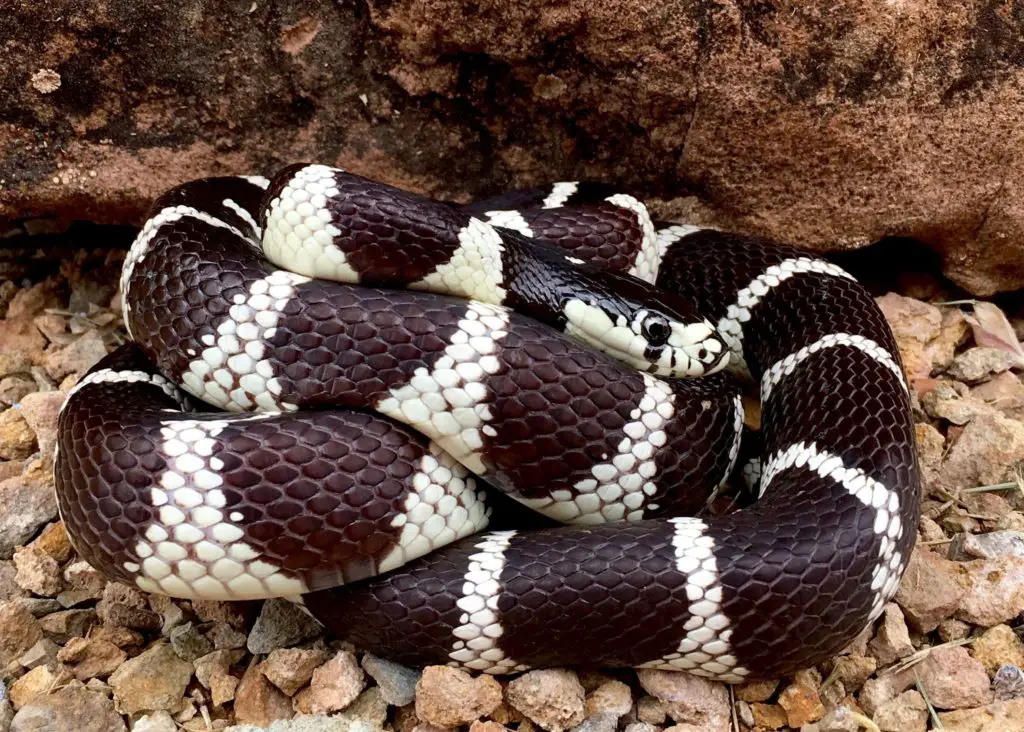
California King Snakes have beautiful, striking black and white colouration. They also come in two main pattern varieties: blotched and stripy. You can pick whichever you prefer!
These snakes have very simple care requirements that are similar to those of Corn Snakes. As far as adult size goes, I personally haven’t seen many over 4ft (120cm) long, and some are actually smaller. A lot of sources do reference them growing to 6ft (183cm) long but this size is honestly very unlikely.
You can read more about how big this subspecies of King Snake gets in our post: California King Snake Size.
Overall, this species is definitely one of my favourites. They’re just a good pet all-round. The only reason they are further down the list than the others is because outside of the US they are harder to find for sale.
What I like about the California Kingsnake
I started out with Kingsnakes when I was around 13 years old, and the California Kingsnake is still my favorite. The black and white bands or stripes are particularly striking, and make this species stand out from other Lampropeltis snakes in terms of appearance. Sadly you don’t see a lot of them over here in the UK, but in the US they are very widely available and cheap to buy.
| Pros | Cons |
| – Cheap – Hardy – Good variety of morphs | – Less available in some locations |
5. Rosy Boa (Lichanura orcutti) and (Lichanura trivirgata)
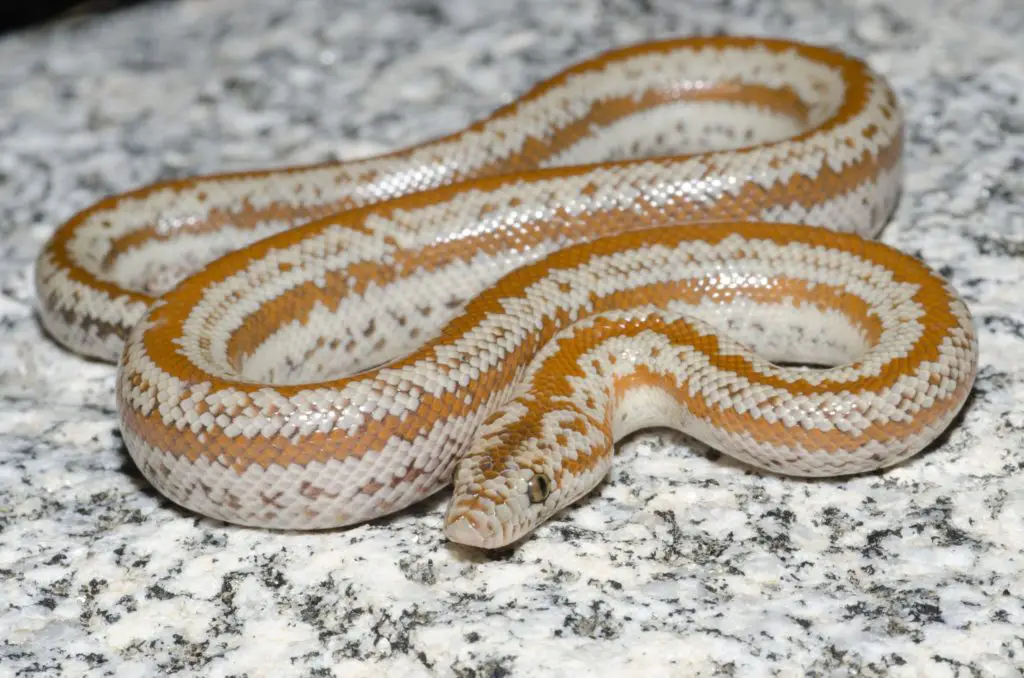
Rosy Boas belong to two species with ever-changing taxonomy. First is the Northern Three Lined Boa (Lichanura orcutti) and second is the Three Lined Boa (Lichanura trivirgata). Both species go by several common names but have been called “Rosy Boas” throughout most of their history in the pet trade.
Asides from this confusing aspect to their background, Rosy Boas of both species and all localities make great pets. They are extremely beautiful, but in a delicate, understated kind of way. They also occur in several colour variations and morphs. With some being black and white rather than “Rosy”.
As captives go, they are hardy, docile, small, and long-lived. They also eat without problem, having a ravenous appetite. The only thing you need to remember is that they do not like high humidity.
Overall, it’s fair to say that Rosy Boas are one of the best pet snakes currently in the market. The only reason they are at number 5 on this list is because they can be expensive and are not always widely available. If you’d like to learn more about them, check out my Rosy Boa Care Sheet.
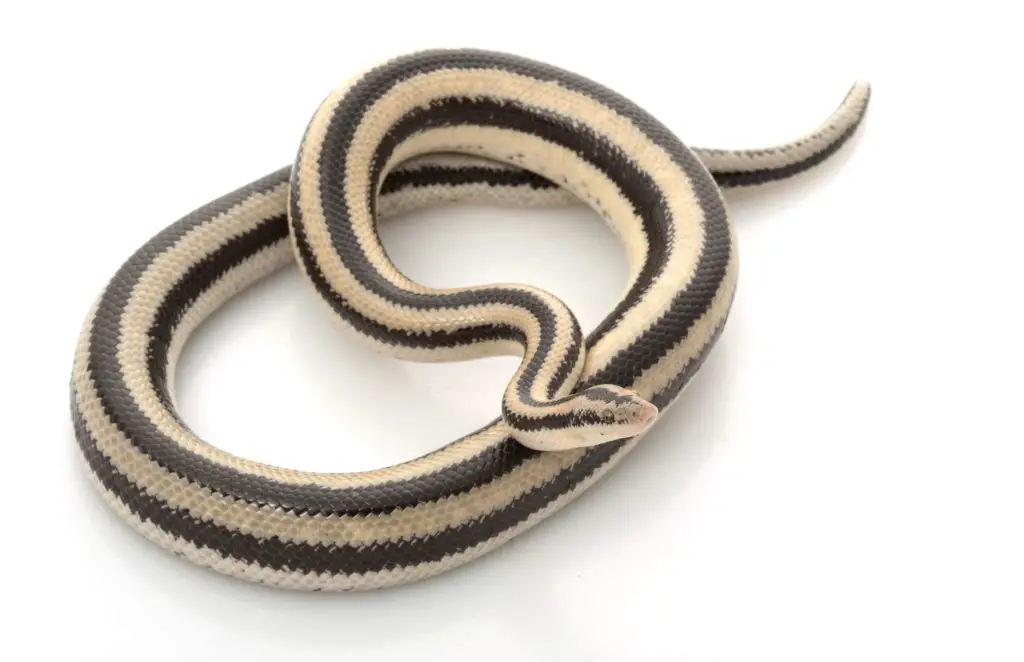
What I like about Rosy Boas
Rosy Boas are another kind of snake that I started keeping in my early teens, and I have great memories of them! They’re eager feeders, beautiful to look at, and also very gentle. Personally, I can’t think of anything cooler than a pint-sized boa!
| Pros | Cons |
| – Hardy – Gentle – Good feeders | – More expensive – Won’t tolerate high humidity |
Pet snakes for sale
If you’re looking for any of these species’ asides from number 5, then your local pet store should be able to help you. That said, your local pet store may not have as wide a selection as a breeder would.
In my experience, it pays to spend a good deal of time researching before buying when it comes to snakes. Sometimes, you can get the most accurate advice and prices by speaking directly to breeders.
One platform that makes this possible is Morphmarket, a website through which you can not only contact breeders about their animals, but also see their ratings and feedback from other buyers. This is probably now the safest way to buy a pet snake.
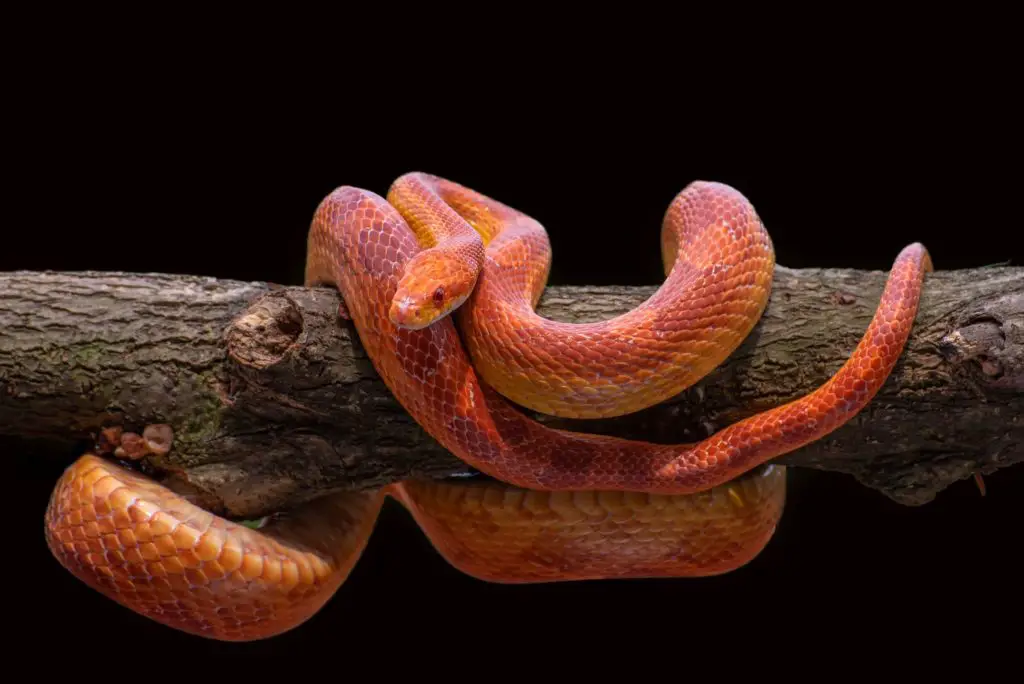
How much does a pet snake cost?
Corn Snakes, Western Hognoses, Ball Pythons and California Kingsnakes are generally priced between $20-100. This price range is for normal babies, not albinos or other morphs. For morphs, you can expect to pay at least 20% more. If you do want a colour morph, then a Corn Snake will be cheapest.
If you have your heart set on a Rosy Boa, then you must expect to pay more. In general, they cost at least $150, and often over $200.
When planning to purchase any of these pet snake species, remember that their upfront price is only part of the total cost. You will also need to buy them an enclosure, substrate, a water bowl, hides, decorations, a heating appliance and thermostat.

FAQ relating to the best beginner snakes:
Let’s a quick look at some of the most common FAQ I get about these species. If there’s I don’t cover though, please do get in touch for more information.
What is the easiest snake to own as a pet?
The easiest snake to have as a pet by far is the Corn Snake. It is incredibly hardy, docile, and easy to feed. If you get its temperature, humidity, and food right, you will have a low-maintenance pet that could live twenty years or more. Though they prefer mice as food, you can buy these frozen-thawed now, so there’s no need to handle live prey.
What snakes like to be held the most?
The snakes that like to be held most are those that are curious about their surroundings and like to have a look around. This kind of temperament varies by individual, but some Kingsnakes, Ball Pythons, and Corn Snakes seem to enjoy coming out to explore from time to time.
What are the safest snakes to handle?
The safest snakes to handle are small colubrid species like Corn Snakes, Kingsnakes, and Milk Snakes. These species have tiny teeth and are incapable of inflicting an injury. Gentle handling from a young age also makes these snakes extremely unlikely to bite in the first place.

